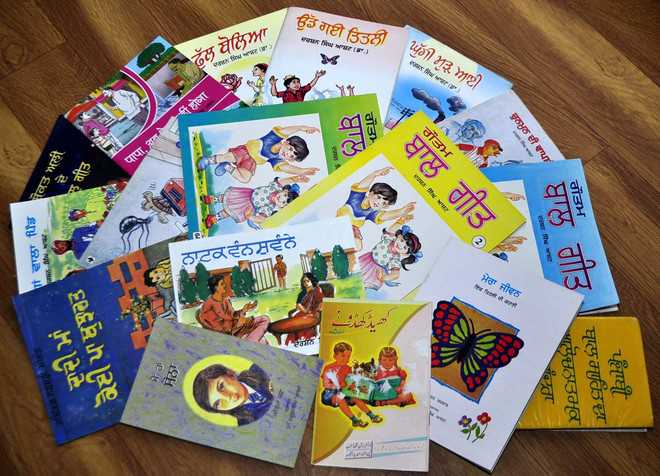The udda, aidda of kids’ magazines
Sanjam Preet Singh
For 11 days, starting on May 17, 1990, Bal Preet Milni Kafila was taken out across Punjab, which was still enmeshed in the morass of militancy. The kafila was an attempt to give an alternative to the “gun culture”. And what better way than spreading the charm of the written word on the impressionist minds of children.
Rama Rattan, who was at the forefront of the kafila, wanted to turn the tide. She wanted to provide children with the guddti she had when she was a child. And when she used to eagerly wait for the new issues of Bal Sandesh and Bal Durbar.
To date, Bal Sandesh has been the longest running children’s magazine in Punjabi; it ran for 54-long years. It was started in 1942 from Preet Nagar, Amritsar, under the patronage of Gurbaksh Singh Preetlari. “It motivated the established writers to create good literature for children,” says Praveen Kaur, daughter-in-law of Preetlari, in a Facebook post on the page, Kitab Trinjan.
The magazine’s slow death came in 1996 because of “dubious” educational policies of then Punjab Government. The magazine was never posted online due to lack of institutional support to such initiaves.
And those making efforts on their own have a painstaking job at hand. Take the case of Baljinder Mann, who publishes Nikkian Kuramblan every month from Mahilpur, Hoshiarpur. He spends about Rs 50,000 on every issue. “The government ads in my magazine stopped long back. I do manage to get some local ads, but that is not enough. I have to spend from my own pocket,” he says. The circulation of the magazine, which was started in November 1995, is about 10,000. Mann has managed to post online magazine’s issues from 2012.
He doesn’t dismiss the power of digital revolution, but says digital literacy in our country has a long way to go. “Children in rural areas are still not digital literate.
The printed word still holds sway,” Mann says. The state of affairs is dismal even on the government front. The two monthly magazines, Primary Sikhya and Pankhriyaan that have the backing of the state government are not doing great. Both magazines have a circulation of not more than 8,000 each. On the digital front, their presence is nil. Darshan Singh Banur, the editor of the two magazines, admits that to have digital presence is asking for too much in a government set-up. Rama Rattan points out another concern. “There is ample literature on children. There’s need for literature for children.”









